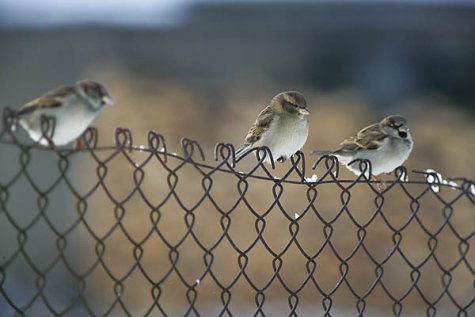Recognising old friends
| House sparrow |
Koduvarblane
|
Passer domesticus |
The male bird’s chin patch is black; female birds don’t have one at all, so this resolves the problem in a moment. But let’s have a look at other differences too: the top of the male bird’s head is grey, and a brown, arched stripe goes from the eye. The female sparrow’s head is brownish, and the eyebrow streak isn’t as dark.
Male birds have more vivid body colours: chestnut brown back with yellow and black. Female birds have duller back plumage: grey, black and beige.
Both have a white band and black lengthwise stripes on the brownish wings ; the underside of the birds is grey. Some of these “chimney dwellers and street urchins” can look quite grubby.
House sparrows are mostly sedentary birds, and adapted to people: they find their winter lodgings near humans, and visit winter bird feeders. Where cattle are still kept in the country, house sparrows are seen around the cattle barns, living in small flocks.
If the description doesn’t quite fit and the bird seems to have a more colourful plumage, it is most likely a tree sparrow. We can meet tree sparrows on the outskirts of cities too – for instance in Kadriorg in Tallinn.
There will be more about the ways and behaviour of the house sparrow when the small birds winter feeder camera in Otepää starts.









